Grow Tomatoes Vertically to Enhance Your Harvest
Trellising indeterminate varieties yields earlier, larger, and better-tasting fruit
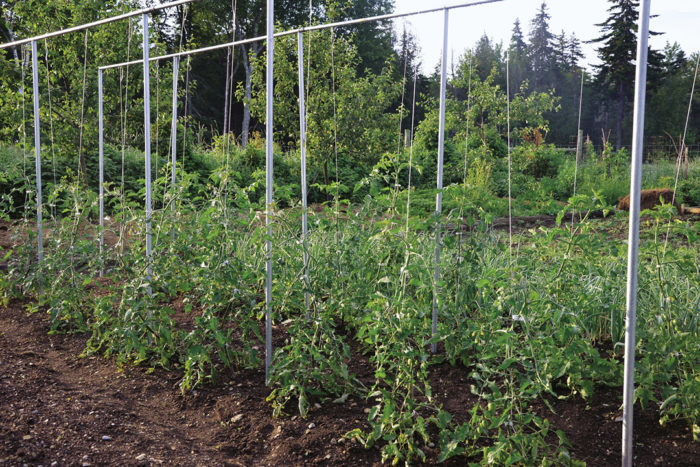
Tomatoes are delicious, abundant, and easy to love, but the plants on which they grow can be a challenge. Left to their own devices, tomato plants will sprawl over the ground, making as many stems and leaves as possible. This growth of stems and leaves encourages photosynthesis and nourishes fruit. But a disorganized mass of vines will not receive sunlight through the leaves nor on its developing fruit. You need to let the light in and ensure that fruit does not rest on the ground exposed to moisture, disease, insects, and other garden pests. The day you set out tomato plants is the day you must decide how to manage their growth. In our garden, my husband, Eliot, and I have had great luck growing tomatoes vertically and pruning each plant into a single stem.
Properly space your plants
Indeterminate tomatoes will keep growing forever if frost, extreme drought, or some other thing does not end their lives. As the main growth tip of the young plant continues to grow, flowering branches produce fruit along its length. But additional flowering branches, known as suckers, will also form in the axil, or V, at each leaf node (the point where a leaf stem joins the main stem of the plant). If left to grow, these new branches will eventually make even more subbranches until you wind up with something like a large limp tree.
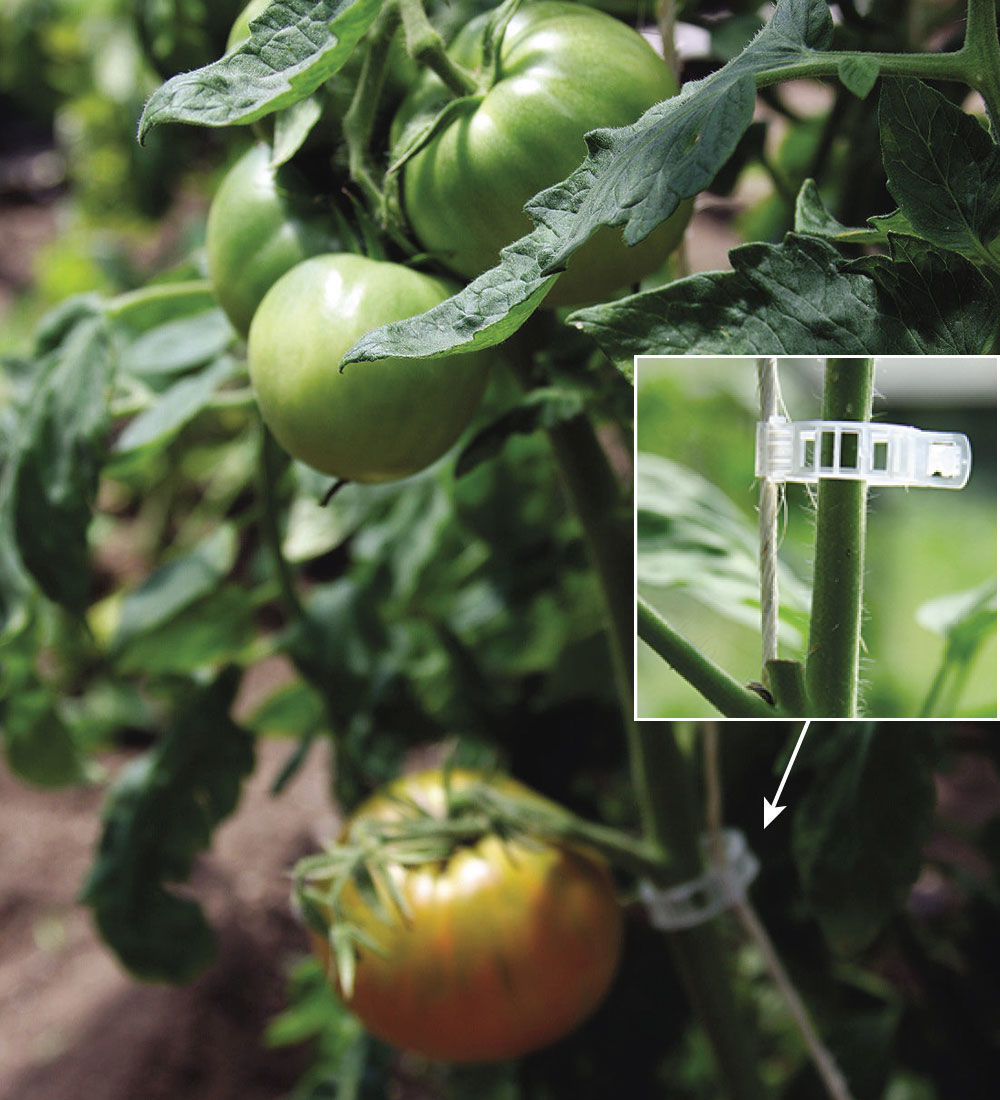
Pruning can keep that endless growth in check, but you first need to choose a means of support for your plants. Lashing a tomato plant to a stout wooden pole is a viable method, and a sturdy tomato cage would also work—if it were at least 6 feet tall. The best method, however, is to support the plants from above. Our simple trellis, made out of galvanized electrical metallic tubing, is composed of support posts that hold up a top bar. We tie lengths of soft garden twine from the bar and train the tomato plants to climb them. When a plant is 18 inches tall, we tie the bottom of a string to its stem and then twist the main stem around the string as it grows. If necessary, we use small plastic tomato clips to hold the stem and the string together. How close you plant the tomatoes depends on how you are pruning them. Even when pruning to a single stem, we space ours 2 feet apart to make sure that they are not crowded and that they receive ample light.
Pruning is a snap
The essential part of pruning is simply to pinch out any suckers that appear in the axils so that new fruiting branches do not form and the plant can put its energy into the setting and ripening the fruit produced on the main stem. You might have fewer tomatoes in the end, but they will be earlier, larger, easier to pick, and better tasting. I make a point of pruning my row of tomatoes about once a week and pinching the suckers while they are small; however, any suckers that are missed and grow larger can be snipped off with pruners. That’s all there is to it. In hot climates, where sunscald on fruit can be a problem and some shade on the fruit is a good thing, allow each sucker to form two leaf branches before pruning the sucker in order to have extra leaf cover. Four to six weeks before the first expected frost, it’s a good idea to pinch off the main stem’s growing tip to halt its climb. New tomatoes that have formed will not likely ripen, so the plant’s energy is best spent making the existing ones juicy and red while there’s still time.
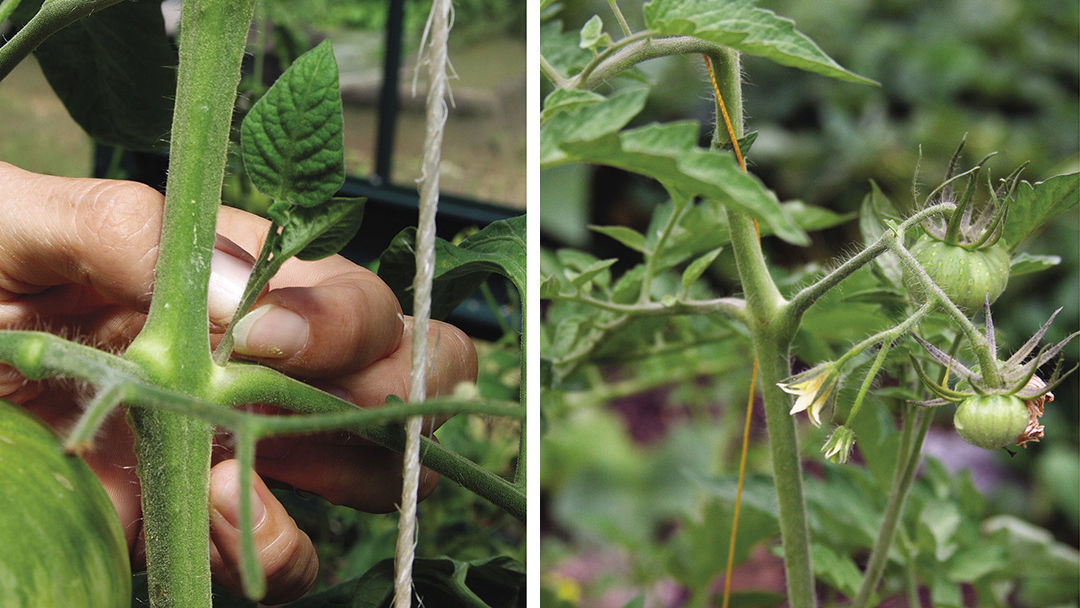
Watching for problems is easy
As with any tomato planting, it’s important to keep an eye out for problems. If you’ve provided good fertile soil, rich in organic matter, none or few might occur. Growing varieties that do well in your climate and choosing ones with good disease resistance are also good preventive measures. Maintain good plant hygiene by picking off yellow leaves that form low on the plant as this action trends upward. Remove overripe or disease-infected fruit. Use clean pruners, and be careful not to spread infection from one plant to the next. And don’t smoke: The tobacco on your fingers can transmit the tomato mosaic virus. Pick tomatoes regularly, using pruners or scissors rather than tearing the fruit off the vine and leaving a messy wound. And when the tomatoes finally run their course, note where they grew. Many problems can be avoided by rotating the crop and choosing a new spot the following year.
Our system isn’t the only good one, but we appreciate its clarity. We like the way the plants look, showing off their bright fruit. Even a green tomato, such as ‘Mr. Stripey’, stands out with this method. And we never feel overwhelmed by our tomatoes. We love them, but we’re in charge of their growth.
How to: Build a single-stem trellis
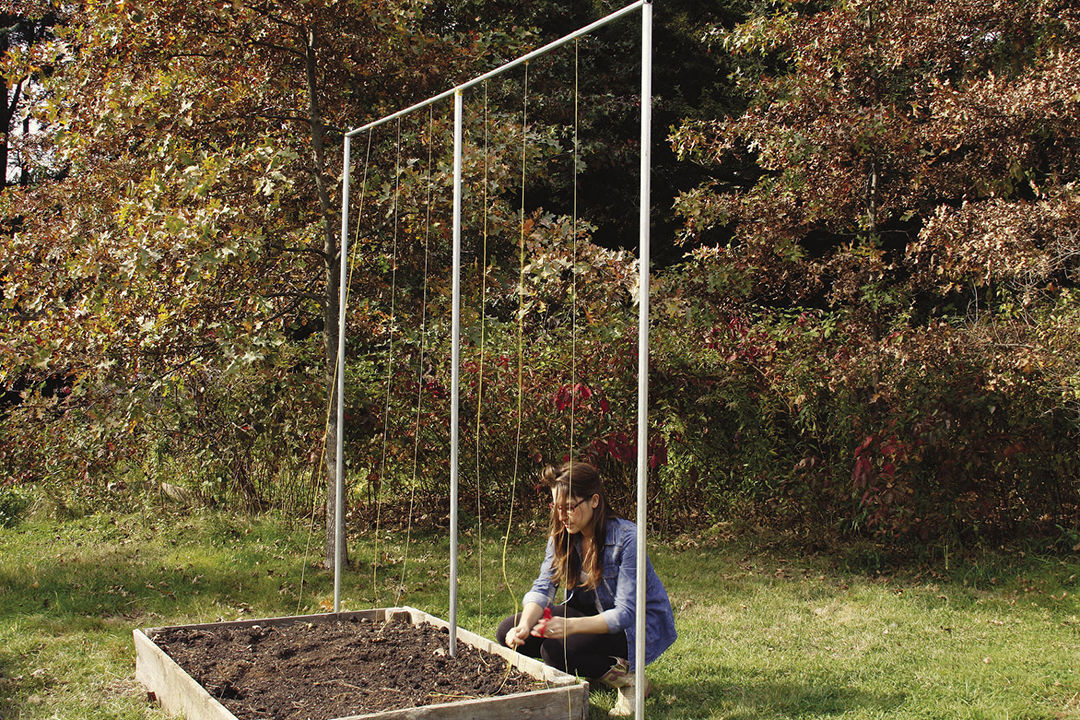
The simplest trellis support has two parts: upright posts and a crossbar. The crossbar eliminates the sagging and bending of other systems. We used to make trellis supports out of wood by using 2x2s for the uprights and the crossbar; however, wood rots in contact with soil after a few years. We now use galvanized electrical metallic tubing (EMT) for both the uprights and the crossbar. EMT is sold in standard 10-foot lengths.
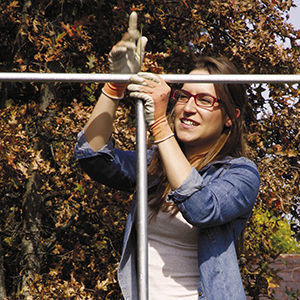
Begin with the uprights
The uprights should be one diameter size larger than the crossbar to allow a hairpin-shaped piece of flexible wire to fit in and secure the bar on top. We use a 1-inch-diameter conduit for the uprights and a ¾-inch-diameter for the crossbar. For a 6½-foot-tall trellis, we cut the posts 8 feet long and drive the uprights 18 inches into the soil. When you drive a pipe using a hammer, the force of the blows can deform the end of the pipe; you can prevent that by inserting a 6-inch-long bolt with ahead a little larger than the pipe into the top of the pipe and hammering on that. Be sure to wear eye protection when hammering on metal.
Use biodegradable twine
The medium on which the plants climb depends on the crop. Biodegradable twine works well for tomatoes, and it makes cleanup easy because everything—vines, twine, and all—can be thrown onto the compost pile to decompose.
Keep the trellis up over winter
Instead of removing the trellises at the end of the season and storing their parts, you might wish to erect them permanently in a section of the garden reserved for trellised crops. You could then rotate those crops between the trellised beds from year to year.
Barbara Damrosch has written numerous books, including The Four Season Farm Gardener’s Cookbook, co-authored with her husband, Eliot Coleman. She and Eliot operate Four Season Farm in Harborside, Maine.
Photos, except where noted: Lynn Felici-Gallant
Fine Gardening Recommended Products
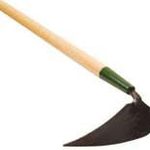
Long Handle EZ-Digger
Fine Gardening receives a commission for items purchased through links on this site, including Amazon Associates and other affiliate advertising programs.

Sun Joe Cordless Telescoping Pole Chain Saw
Fine Gardening receives a commission for items purchased through links on this site, including Amazon Associates and other affiliate advertising programs.

Chapin International 10509 Upside-Down Trigger Sprayer
Fine Gardening receives a commission for items purchased through links on this site, including Amazon Associates and other affiliate advertising programs.






Comments
Log in or create an account to post a comment.
Sign up Log in